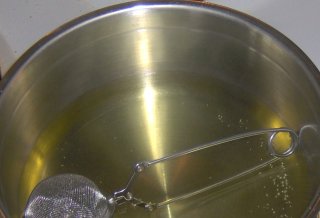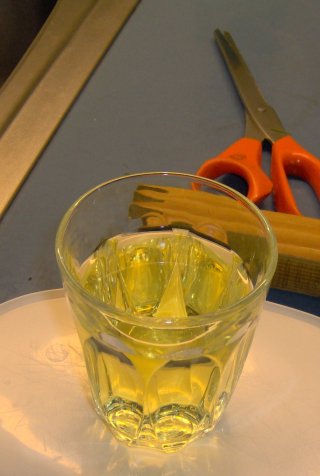You forgot Pluto! (Or maybe not.)
I'm immensely happy to report that finally, after numerous postponements and cancellations, NASA's mission to Pluto, New Horizons, was launched yesterday.
I've been waiting more than sixteen years for this to happen. Ever since Voyager 2 passed Neptune in 1989. I could hardly believe it — that spacecraft had been moving steadily since before I was born, sending pictures of planet after planet, and never skipping a single one. And now it was leaving the solar system without visiting Pluto, the last one! In the media reports, they even said that Voyager 2 had gone past Neptune, the outermost planet in the solar system
. This left me puzzled: didn't everyone know that it was Pluto that was the 9th and last planet? I didn't realise then that the orbit of Pluto crosses that of Neptune, so that for a short period from 1979 to 1999, Neptune actually was the farthest planet in the solar system. So for a while I believed that they had forgotten about Pluto entirely — or, at least, considered it less than a planet, and not worth visiting. (There is actually now talk about demoting Pluto fram planethood, but that of course doesn't make it any less interesting as an object for study.)
Of course, Voyager 2 wasn't meant to visit all of the planets: the mission only covered Jupiter, Saturn, Uranus, and Neptune. You can't just send a space probe blasting off in an arbitrary direction, you have to plan the trajectory carefully, so you get the exact amount of gravitational assistance. The position of the planets at that time was favourable enough to make that journey, though not favourable enough that Pluto could be reached.
So, to the JPL: I'm sorry I doubted you, and I wish you the best of luck with your new mission.
[Friday, Jan 20, 2006 @ 15:18] | [] |
# |
G
Gell-Mann proposes experiment to determine that there is only one fundamental particle
I had a dream last night that for a long time, there had been plans afoot to test the hypothesis that there is only one fundamental particle in the universe. If I recall correctly, the Standard Model of particle physics actually predicts that all electrons are really one and the same, but that it just appears everywhere at the same time. In my dream, this applied to all particles, and it was actually testable.
I was watching a documentary about this on Discovery Channel, where they said that the traditionally proposed way of determining this was to use sensors on the moon under very specific astronomical conditions. Particle physicists had tried to persuade the Apollo program to deploy these sensors during their missions in the early 70s, but to no avail — the theory was simply too avant-garde back then, and it was pushed back in favour of more immediately useful experiments. Subsequent cuts in the space program had caused there to be no new missions to the moon, which was a pity, since the necessary constellation of the planets was just now about to repeat itself.
Now Murray Gell-Mann came on the screen, and he proposed a completely new experimental setup that didn't need any equipment on the moon. Everything that was needed, he said, was for a few hundred thousands of people to drink a glass of water simultaneously, and perform a simple measurement. Presumably they would time how long it took to do this, but details were vague. Statistical analysis of the data would be sufficient to confirm or reject a key part of the theoretical machinery that predicted all fundamental particles to be identical.
Then I woke up, and felt very thirsty. I staggered out into the kitchen, and — you guessed it — guzzled a large glass of water.
[Friday, Aug 26, 2005 @ 11:47] | [] |
# |
G
Does green tea taste like grass?
Those of us who like green tea are often told that it tastes like grass. I always though that that was nonsense. But in the back of my mind, I thought to myself maybe they actually know what they are talking about?
Maybe it really does taste like grass? I decided to find out.
First, some operational assumptions of my experiment:
- Similarity of taste is a symmetric relationship. Hence, if green tea tastes like grass, grass must also taste like green tea.
- When people compare green tea to grass, they mean fresh grass.
It can be very dangerous to ingest plants if you don't know if they are poisonous or not. Luckily, I know a botany PhD, and he told me that all grasses in Norway are safe to brew tea on.
Step 1. Harvest
I was considering to collect grass from the lawn, but since it has been mowed recently, it would be difficult or impossible for me to tell whether I was harvesting actual grass, or some kind of weed that could possibly be poisonous. So for safety I opted for a place farther out in the terrain, where I could see the entire plant.
Step 2. Cut up
 I did not bother to cut the grass very finely, as shown in the picture.
I did not bother to cut the grass very finely, as shown in the picture.
Step 3. Brew

I had
no idea what a reasonable brewing time and temperature for fresh grass is, so I tried eight minutes at sub-boiling temperature (about 85°C) for starters, as is recommended for green tea. It seemed to have worked fairly well.
Step 4. Taste
The grass that I harvested tasted nothing like green tea at all. It tasted like... well, taste is mostly smell anyway, so the aroma I sensed when chewing on fresh grass was about the same that you can smell on a freshly mowed lawn or in a silo.

The grass tea, on the other hand, tasted completely different from both green tea and fresh grass. It was quite acidic, more so than any other tea I've tasted. It reminded me most of all of black currant toddy, but that description really does not do it justice — it was a quite remarkable taste, but neither pleasant nor unpleasant.
Conclusions
There is no valid basis at all for saying that green tea tastes like grass.
Brewing teas on grass is not as preposterous as it sounds, and it may be reasonable to try experimenting with different types of grasses.
[Tuesday, Aug 02, 2005 @ 02:07] | [] |
# |
G
Night vision is laterally independent
Couldn't get to sleep tonight, because I was too excited about going home for Christmas tomorrow. So I picked up the mobile phone (it was under my pillow, since I use it as an alarm clock), and read some news on WAP. After having read all my bookmarks, I put ut down.
When looking at the dimly lit room, I noticed that the image from my left eye looked darker than the one on the right. I had held the display of the phone up against the left eye when reading, since that is my dominant eye. So the left eye had got lots of the light, but the right eye next to nothing. Hence, the left eye was accommodated for day vision, while the right one was still in night vision mode.
It struck me that the first time someone discovered this, it must have been an important result in neurology. Consider this: in the pre-technological era when the human brain spent most of its time evolving, few light sources that would be seen only by one eye existed. Hence, there should be no evolutionary advantage of having a separate feedback mechanism for each eye, as opposed to a central "light meter" that responds to the overall brightness of the visual field. Therefore, the reason that the dilation of the pupil of the eye is controlled separately for each eye, must have something to do with some structure in the brain that was "already there", ie. evolved for a separate reason.
Trying to go back to sleep now -- have to be up in less than six hours.
(If you know something about this that I haven't mentioned, please feel free to drop me an e-mail.)
[Thursday, Dec 16, 2004 @ 02:15] | [] |
# |
G



